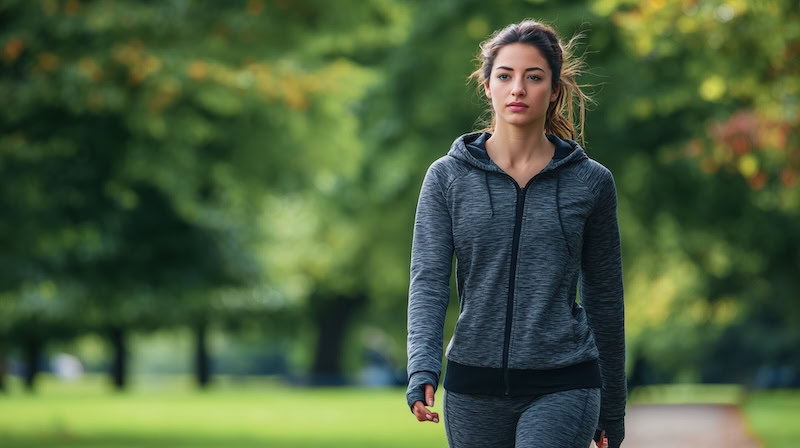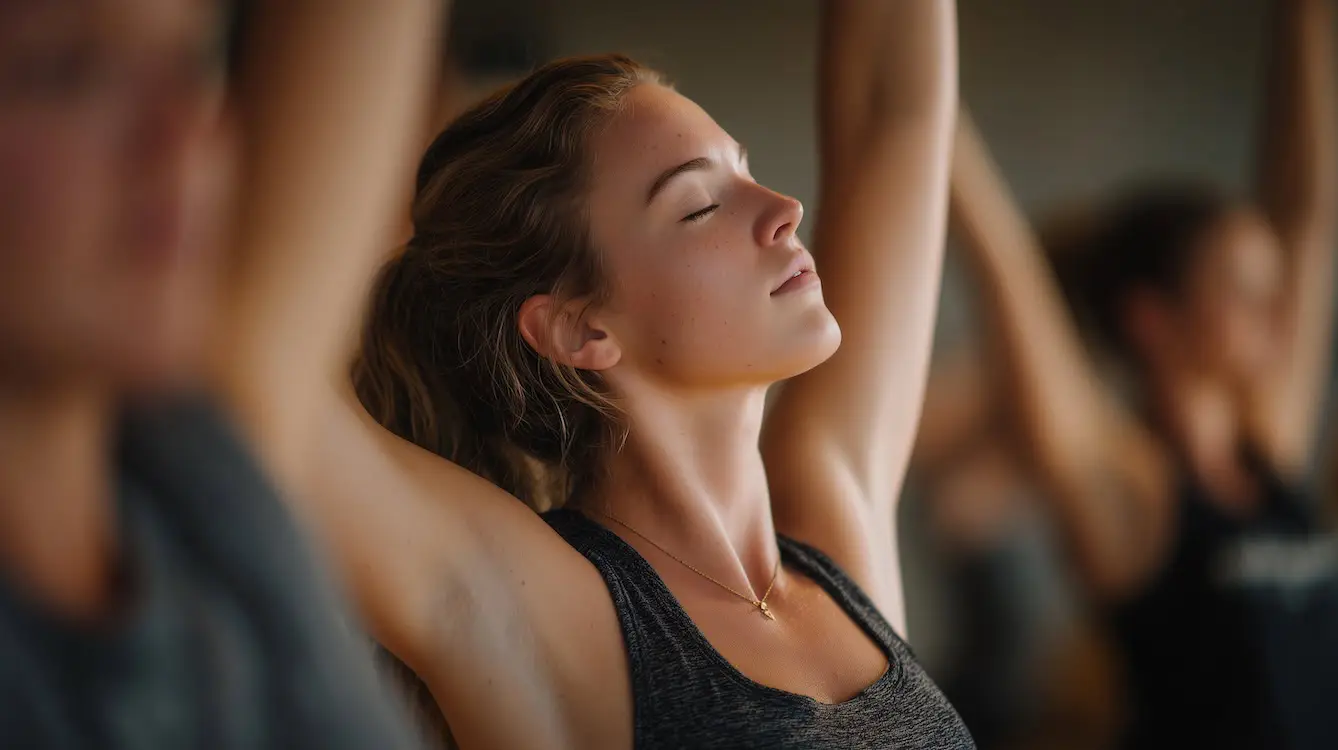The era of punishing workouts is giving way to a gentler, more sustainable way to move. Instead of pursuing intensity, people are adopting what is now called soft fitness (also known as slow fitness, mindful movement, or low-impact training). The emphasis is on awareness, balance, and long-term well-being rather than exhaustion. These gentler forms of exercise develop strength, flexibility, and energy from within, helping the body move more efficiently and feel more relaxed. From walking and swimming to yoga, Pilates, and tai chi, this new approach to fitness demonstrates that consistency and care can produce lasting results.

Moving Gently With Walking
Walking is one of the most natural and accessible forms of movement. It can be done anywhere, at any pace, and easily adapted to suit your fitness level. Regular walking strengthens the heart, supports healthy joints, and boosts mood through fresh air and gentle activity. It improves circulation, aids digestion, and helps clear the mind, making it one of the simplest ways to manage stress and improve sleep. Even a short daily walk offers real benefits, from stronger legs and better stamina to greater mental clarity. Walking is suitable for everyone, whether you’re starting to exercise, recovering from injury, or maintaining good health into later life.
Moving Freely With Swimming
Slow or mindful swimming adopts a calm, unhurried approach to being in the water. Instead of racing through laps, it emphasises rhythm, breath, and relaxation. The water provides natural resistance, strengthening major muscle groups while reducing joint strain. It helps build cardiovascular fitness, tones the body evenly, and promotes deep, steady breathing. Beyond the physical benefits, swimming gently soothes the mind, alleviates tension, and imparts a lasting sense of ease. It’s ideal for anyone seeking a full-body workout that feels restorative rather than draining, especially those with stiffness, injuries, or fatigue.
Improving Flexibility With Mobility Flow
Mobility Flow is a gentle, controlled sequence of movements designed to keep joints flexible and the body moving freely. Combining elements of yoga, physiotherapy, and functional training, it promotes body awareness, coordination, and improved posture. Regular practice helps reduce stiffness, especially after long hours of sitting, and aids recovery between workouts. Over time, it enhances balance, agility, and ease of movement in daily life. It’s ideal for individuals seeking to feel more loosened, lighter, and more mobile, from beginners and office workers to active people engaging in more demanding exercise.
Building Core Strength With Pilates
Pilates emphasises slow, precise movements that strengthen the core and improve alignment. It can be practised on a mat or using equipment such as a reformer. Each exercise targets deep stabilising muscles, building strength without strain or impact. The practice enhances posture, balance, and coordination and is known for preventing and alleviating back discomfort. Pilates also incorporates mindful breathing, bringing calm and focus to each session. The outcomes include a stronger core, better mobility, and longer, leaner muscles. It’s ideal for anyone seeking low-impact, full-body strength training that promotes everyday wellbeing.
Creating Balance Through Yoga
Yoga unites breath, movement, and stillness to build strength while calming the mind. From gentle hatha and yin to more flowing vinyasa styles, it encourages flexibility, balance, and inner focus. The benefits include increased mobility, improved posture, reduced stress, and greater mental clarity and emotional stability. Regular practice increases awareness of how the body feels and moves, helping to restore balance both physically and mentally. It’s suitable for almost everyone and can be adapted to any level, making it one of the most inclusive and holistic forms of movement.
Restoring Calm Through Restorative Yoga
Restorative yoga promotes stillness and deep relaxation through gentle, supported poses using props such as bolsters and blankets. Unlike active styles, it emphasises slowing down and allowing the body to rest fully. This serene form of movement helps release physical tension and calms the nervous system. The benefits include reduced stress, increased flexibility, better sleep, and a greater sense of ease. Over time, restorative yoga nurtures balance, rest, and emotional renewal. It’s ideal for anyone feeling tired, anxious, or overstimulated, and for those seeking to complement more energetic exercise with deep recovery.
Developing Strength And Poise With Barre
Barre combines ballet-inspired movement with elements of Pilates and yoga, focusing on precision, posture, and control. Movements are small and repetitive, engaging muscles deeply without impact. The benefits include increased strength, flexibility, and balance, as well as improved coordination and grace. Barre sculpts and tones the body, particularly the legs, core, and arms, while enhancing endurance through mindful repetition. Results include better posture, stronger stabilising muscles, and long-term tone that feels both graceful and functional. It’s an excellent choice for anyone who enjoys low-impact strength training and wants to build stability with elegance.
Building Steady Power With Slow Strength Training
Slow strength training involves deliberate, controlled resistance exercises using body weight, bands, or light weights. Moving slowly helps muscles engage more fully and lowers the risk of injury. The advantages include enhanced muscle tone, increased bone density, improved stability, and a better sense of how the body moves and feels. Progress is gradual but consistent, fostering lasting strength without fatigue or overtraining. It’s suitable for people returning to exercise, older adults looking to maintain muscle mass, or anyone seeking a gentle yet effective way to build resilience and strength.
Cultivating Mindful Movement Through Tai Chi
Tai Chi is an ancient Chinese discipline combining slow, flowing movements with deep breathing and focused awareness. Often described as meditation in motion, it improves balance, posture, and coordination while reducing stress and promoting relaxation. The benefits include increased joint flexibility, better cardiovascular health, and sharper concentration. When practised regularly, Tai Chi fosters steadiness, grace, and a sense of calm energy throughout the body. It’s suitable for all ages, especially older adults or those recovering from injury, providing a peaceful, mindful way to maintain both strength and serenity.
Final Notes On Soft Fitness
Soft fitness is reshaping the meaning of strength. It shows that mindful, consistent movement can lead to fundamental transformation: stronger muscles, better mobility, and a calmer mind. These practices prioritise care, awareness, and balance, proving that lasting results come from moving with intention, not intensity. The future of fitness lies in gentleness, connection, and the confidence to move at your own pace.
Frequently Asked Questions About Soft Fitness
What does soft fitness mean?
Soft fitness refers to gentle, low-impact movements that enhance strength, flexibility, and balance without overexerting the body.
Are there other terms for soft fitness?
Yes, it is also known as slow fitness, mindful movement, or low-impact training, all of which describe exercise that emphasises control, balance, and longevity.
Is gentle fitness effective for weight management?
Yes. Regular gentle movement promotes a healthy metabolism, builds lean muscle, and helps reduce stress, which can affect weight balance.
Can soft fitness replace high-intensity workouts?
It depends on your goals. For many people, soft fitness offers lasting strength, mobility, and energy without the strain of high-intensity training.
How often should I do soft fitness exercises?
Aim for three to five sessions each week, mixing walking, yoga, and light strength work for variety and balance.
Is soft fitness suitable for beginners or older adults?
Absolutely. Most soft fitness activities can be adapted for any level or age, making them safe and effective for almost everyone.
We like these articles: Women’s Health: Try a soft fitness workout and British Heart Foundation: 6 surprising health benefits of walking. You might also like this feature Ten easy protein snacks for your post gym workout.
